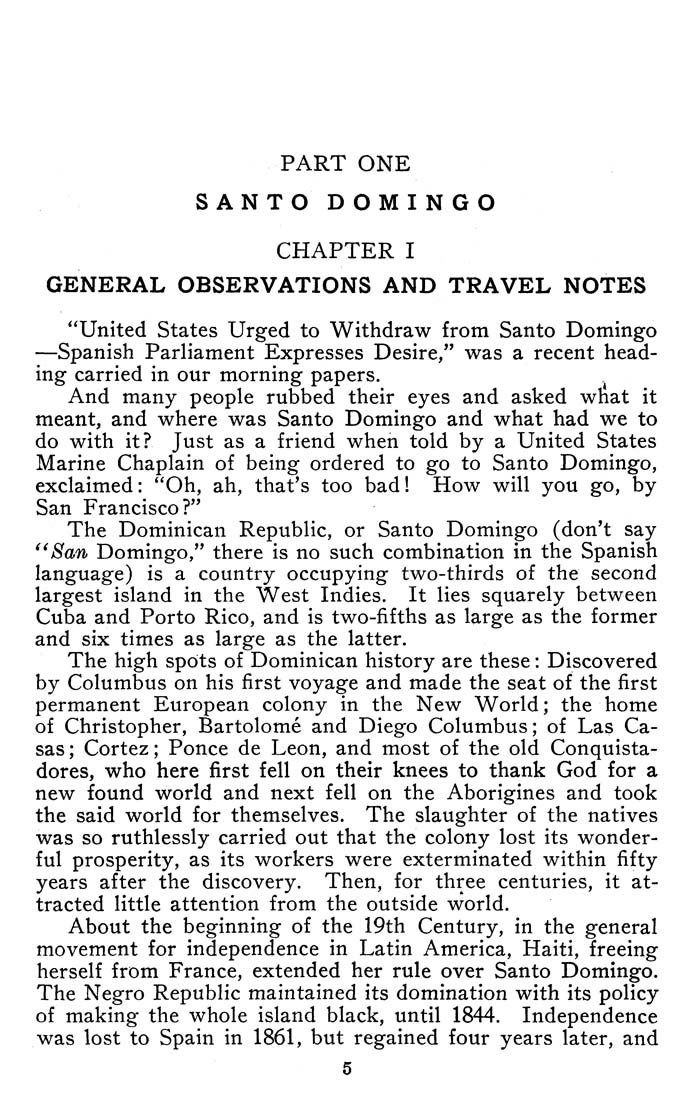PART ONE
SANTODOMINGO
CHAPTER I
GENERAL OBSERVATIONS AND TRAVEL NOTES
"United States Urged to Withdraw from Santo Domingo
—Spanish Parliament Expresses Desire," was a recent head¬
ing carried in our morning papers.
And many people rubbed their eyes and asked what it
meant, and where was Santo Domingo and what had we to
do with it? Just as a friend when told by a United States
Marine Chaplain of being ordered to go to Santo Domingo,
exclaimed: "Oh, ah, that's too bad! How will you go, by
San Francisco?"
The Dominican Republic, or Santo Domingo (don't say
'^8an Domingo," there is no such combination in the Spanish
language) is a country occupying two-thirds of the second
largest island in the West Indies. It lies squarely between
Cuba and Porto Rico, and is two-fifths as large as the former
and six times as large as the latter.
The high spots of Dominican history are these: Discovered
by Columbus on his first voyage and made the seat of the first
permanent European colony in the New World; the home
of Christopher, Bartolome and Diego Columbus; of Las Ca-
sas; Cortez; Ponce de Leon, and most of the old Conquista-
dores, who here first fell on their knees to thank God for a
new found world and next fell on the Aborigines and took
the said world for themselves. The slaughter of the natives
was so ruthlessly carried out that the colony lost its wonder¬
ful prosperity, as its workers were exterminated within fifty
years after the discovery. Then, for three centuries, it at¬
tracted little attention from the outside world.
About the beginning of the 19th Century, in the general
movement for independence in Latin America, Haiti, freeing
herself from France, extended her rule over Santo Domingo.
The Negro Republic maintained its domination with its policy
of making the whole island black, until 1844. Independence
was lost to Spain in 1861, but regained four years later, and
|








